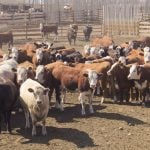
Beef Cattle
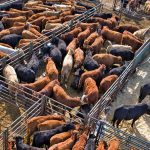
U.S. livestock: CME cattle futures extend gains, await U.S. data
Fund liquidation and technical selling seem exhausted after driving live cattle to Friday lows
U.S. cattle futures extended gains on Wednesday as traders adjusted positions after steep losses last week and ahead of monthly supply data due on Friday.

Klassen: Cash feeder prices soften on futures market uncertainty
Supplies are higher than expected as consumers reign in spending
The live and feeder cattle futures appear to be incorporating a risk discount due to the uncertainty in demand. Consumers are pulling in the reigns on spending. Interest rates are at 40 year highs and inflation remains elevated. Larger supplies and lower demand results in lower prices.
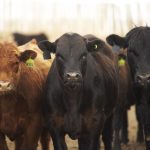
Klassen: Buyers contemplate feeder market prices
In adverse weather, sale results vary
Compared to last week, western Canadian yearling markets traded $3-$5/cwt lower on average although limited numbers made the market hard to define. Calf markets traded $4-$8/cwt on either side of unchanged. It appeared that 700-plus-lb. calves were up $4 to as much as $8. The variation in the price structure was due to the adverse […] Read more

Unpacking an oat silage feed report
Understanding results and applying the information from a feed test is key to developing balanced rations
You’ve collected representative samples of feed and sent them for analysis. Interpreting the results and building a balanced ration is the next step. (see ‘Certificate of Analysis’ report example at bottom) Moisture and dry matter: Moisture represents the amount of water present in a feed sample. Dry matter is what remains after water is removed. Moisture […] Read more

Researchers hope hybrid rye silage can help plug feed gap
With less ergot risk than conventional rye, hybrid rye may be a good option for some cattle feeders
Frank Zhang says when he talks to his colleagues about silage, they all are familiar with barley silage — but none are familiar with rye silage. “It’s very rare to find people using the rye silage,” Zhang says. “But thinking about the environment changing, just like the drought this year … this might provide an […] Read more
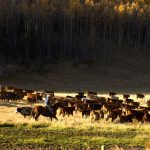
Cattle rustling remains ‘one of great mysteries of the range’
Rustlers are still pilfering cattle, often with the help of modern technology
To quote a CBC article in the Cochrane Eagle, “For as long as there have been cattle, people have been stealing them.” In my view, it may be the second-oldest profession in the world. While brand inspectors check auction markets in B.C., Alberta and Saskatchewan, no such system exists in Manitoba or Ontario. The lack of […] Read more
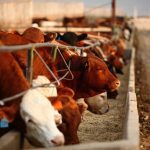
Klassen: Canadian feeder market holds value despite weaker futures
Weaker loonie offers support
Compared to last week, western Canadian yearling prices traded $3-$5 lower while calf values were relatively unchanged. The market was slightly softer early in the week. On Wednesday, Alberta packers renewed fed cattle bids similar to week-ago levels and the aggressive buying lifted calf prices back up to levels similar to seven days earlier. Adverse […] Read more
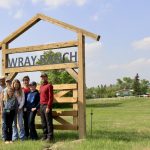
TESA winners focused on stewardship and succession planning
The Wray family aims for sustainability in everything from grazing practices to transitioning the ranch
After winning the Environmental Stewardship Award (TESA) for Alberta, Doug and Tim Wray were already happy with the success they’d had. They only had to travel an hour to the Canadian Beef Industry Conference, hosted in Calgary, Alta., in mid-August to see who won the national award, so making the trip was an easy decision. […] Read more

Do transport rest stops put calf health at risk?
Research on the Record with Reynold Bergen
The Canadian Food Inspection Agency revised the Transportation of Animals regulations a few years ago. Among other things, the revised regulations require longer and more frequent feed, water and rest stops during long-haul transport. Over the past few years, this column has summarized three research trials conducted by Dr. Karen Schwartzkopf-Genswein’s team at Agriculture and Agri-Food […] Read more
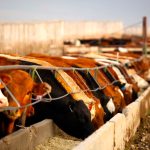
MarketsFarm feed barley update: Barley prices holding steady
Canada’s barley supply/demand doesn’t matter to price determination. Domestic barley value is currently tethered to the price of imported U.S. corn, holding steady for the time being. Both are showing around $335/tonne delivered into southern Alberta for nearby delivery. Our best guess is that 2-2.5 MMT of U.S. corn will come into Western Canada in […] Read more



